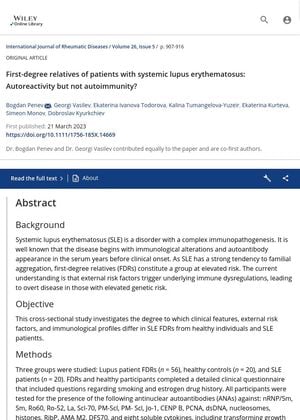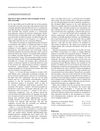First-Degree Relatives of Patients With Systemic Lupus Erythematosus: Autoreactivity but Not Autoimmunity?
March 2023
in “
International journal of rheumatic diseases
”

TLDR Relatives of lupus patients show signs of immune system activity but not full-blown lupus.
The cross-sectional study investigated the differences in clinical features, external risk factors, and immunological profiles among first-degree relatives (FDRs) of systemic lupus erythematosus (SLE) patients, healthy individuals, and SLE patients. The study involved 56 SLE patient FDRs, 20 healthy controls, and 20 SLE patients. The results showed that compared to healthy controls, FDRs had higher titers of antinuclear autoantibodies (ANAs), more specific staining immunofluorescent patterns, and more autoantibody specificities. FDRs also had significantly different transforming growth factor-β (TGF-β) levels from the other two groups. Some clinical features in FDRs, such as hair loss, skin, and oral ulcer-like lesions, were associated with higher ANA titers. The study concluded that FDRs display unique clinical and immunological profiles, placing them between healthy individuals and SLE patients, with a balance between compensated immune dysregulation and disease-developing potential. A possible association between ANA titer and the number of clinical complaints was observed, which needs further confirmation in more extensive studies.



